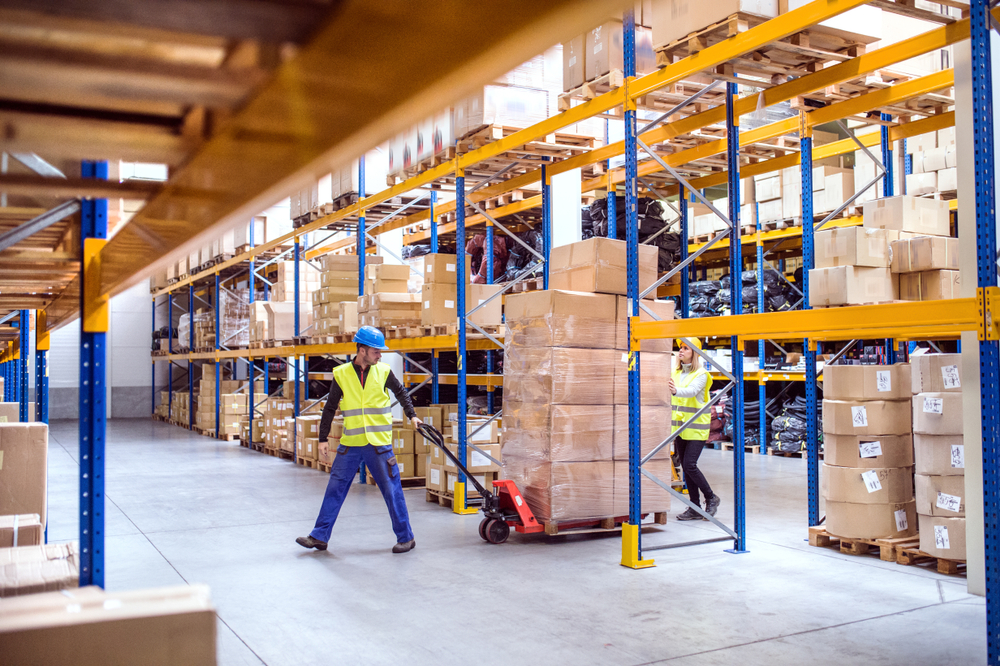Warehouse Logistics Guide and Tips
Imagine a bustling warehouse with dozens of employees, shelves stacked high, forklifts moving pallets around, and trucks being loaded and unloaded. While it appears chaotic, it’s all carefully organized. This is the world of warehouse logistics, where every moving piece tells a story.
But how do you make it all work together? How do you keep your warehouse and business running smoothly? These are the questions we’re answering in this article. We’re going to talk about what warehouse logistics is, its challenges, best practices, measuring performance, key strategies, and more. Whether you’re a beginner or a seasoned pro, you’ll walk away with at least one useful idea or strategy. Let’s get started!
What is Warehouse Logistics?
Warehouse logistics is the art and science of managing the flow of goods and information within a warehouse environment. It includes inventory management, storage solutions, material handling, shipping, and more. Think of it as the backbone of any supply chain, ensuring that products are stored properly, organized efficiently, and dispatched promptly.
The Challenges in Warehouse Logistics
Like anything else in logistics, managing a warehouse is no easy task. Here are some of the most common challenges you’ll run into:
- Space constraints: As your business grows, so does your inventory. Finding space to store everything can become a real headache.
- Inventory management: To keep your business running smoothly and not miss out on sales, you need to keep track of what’s in stock, what’s running low, and what needs to be reordered.
- Labor issues: Ensuring that staff are trained, motivated, and working efficiently is easier said than done.
- Technology integration: With the rise of e-commerce and the need for real-time data, integrating the right technology is crucial but can be complex.
- Costs: Balancing the costs of operations, labor, and technology investments while maintaining efficiency and service quality is a constant juggling act.
- Meeting Customer Expectations: With the rise of same-day or next-day deliveries, meeting customer expectations for fast shipping can put added pressure on warehouse operations.
Best Practices
To tackle these challenges effectively, here are some best practices to consider:
- Optimize Storage Layouts: We recommend that you regularly review and optimize storage layouts to maximize available space. Consider vertical storage solutions or modular shelving to adapt to inventory changes.
- Implement a Warehouse Management System (WMS): A robust WMS can address several challenges at once. It can help with inventory management by providing real-time data on stock levels, predicting reorder points, and ensuring efficient order processing. It also helps in keeping customers happy by speeding up order fulfillment.
- Invest in Staff Training: A well-trained staff ensures efficiency and safety in operations. And let’s not forget the boost they get in terms of morale and motivation. Your staff can benefit from forklift training, electric pallet jack training, safety training, and more.
- Connect Your Technology: Invest in technologies that offer seamless integration with your existing systems. This could include RFID tracking, e-commerce platforms, or real-time data analytics tools.
- Flexible Fulfillment Strategies: To meet rising customer expectations, especially in terms of delivery speed, consider strategies like cross-docking, which reduces storage time, or partnering with local couriers for faster expedited deliveries.
- Embrace Automation: Automation, be it through robotics, automated storage and retrieval systems, or conveyor belts, can significantly improve efficiency, reduce labor costs, and ensure faster order processing, helping in both cost control and customer satisfaction.
How to Measure Warehouse Logistics Performance
To know if you’re on the right track, you need to measure your performance. Here’s the key metrics to consider:
- Inventory turnover: How often you sell and replace inventory. High inventory turnover means strong sales or effective inventory management, and low inventory turnover means you might be overstocking or sales are weak. Overstocking can tie up capital and increase holding costs, while understocking can lead to missed sales.
- Order accuracy: The percentage of orders that are processed without errors. High order accuracy leads to happy customers and reduces costs associated with returns or corrections. The more mistakes you make, the more unnecessary costs you incur.
- Warehouse capacity utilization: How much of your available storage space is being used. Of course, you want to maximize your storage potential without unnecessary resource wastage. Monitoring this metric will help you avoid future headaches by anticipating the need for warehouse expansions.
- Labor productivity: The amount of work done per employee. Labor is normally one of the highest costs in a warehouse, so you want to ensure that your employees are being productive. By monitoring this, you can spot areas where training, a morale boost, or an upgrade in warehouse equipment might be needed.
By keeping a close eye on these metrics, warehouse managers and business owners can keep warehouses running smoothly and profitably.
Key Strategies for Improving Warehouse Efficiency
Efficiency is the name of the game. There are a few well-known strategies that you should certainly consider taking advantage of.
First, there’s the idea of lean warehousing, which encourages eradicating waste in various processes, be it surplus inventory or redundant movements. Then we have cross-docking, a technique where products from incoming shipments are directly loaded onto outbound vehicles, slashing the time they spend in storage. Lastly, the just-in-time inventory approach maintains lean stock levels, with orders placed precisely when needed, resulting in minimal excess and maximum responsiveness.
Outsourcing Warehousing & Distribution
Sometimes, the best way to handle warehouse logistics is to let the experts take care of it. That’s where Third-Party Logistics providers (3PLs) come into play. 3PLs specialize in warehousing, distribution, and other logistics services, allowing businesses to focus on their core competencies.
Here at PiVAL, we are proud to be one of the most trusted 3PLs and supply chain companies in Canada. Whether you’re deeply rooted in the Canadian market or just setting foot, we’re here to support every step of your journey. Our facilities? Strategically placed in the nation’s most pivotal locations. Our 1,000,000 sq.ft. of warehouse space are distributed across Montreal, Toronto, Oshawa, Guelph, and Vancouver.
At PiVAL, we’re not just offering services; we’re offering partnership, expertise, and commitment. Contact us today to find out how we can help your business prosper!
Stay Up-To-Date
There's always something new from PiVAL



Leave a Reply